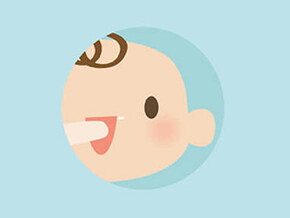
How To Store The Breast Milk? Pumping Breastmilk
How To Pump And Store Your Breast Milk
When you’ll return to your work and your busy schedule after maternity leave, are you going to give up on breastfeeding and its benefits for you and your baby? Will you be thinking of alternative solutions without taking into account the World Health Organization’s recommendations that encourage breastfeeding for at least 6 months?
Of course not! You better think of a more effective solution that this important issue deserves, a solution that will provide your child with all the nutrition he needs from your breast milk, while you’re away. So, what is the solution and why is it so important?
Well, the solution consists of expressing the breast milk at usual breastfeeding times. By doing so, you will manage not only to provide your baby with nutrition while you’re busy with your work and tasks, but to help yourself reduce your breast pain resulting from congestion and stimulate your milk production so it will meet your child’s demand throughout the period of breastfeeding.
However and before you start implementing this important solution, you should make a schedule for your pumping sessions and plan on how to respect these sessions (so they won’t negatively affect your milk production), then select the implementation method that suits you better from among the following:
- Pumping milk by hand: To be able to pump your milk manually, you have to rub your breasts gently, and then squeeze them with care to express the milk.
- Pumping milk with manual pump: To be able to pump your milk with a manual pump, you have to set the machine on your breasts and operate it with your hand and your wrist so the milk will come out. This method requires high coordination capacities and may cause you mastitis.
- Pumping milk with electric pump: Most women recur to this kind of breast pump for it is effective, fast and easy to use. Actually, an electric pump could express milk from one breast or both breasts at the same time, yet some mothers complain of painful nipples while using it.
Now that you’re ready to express your nutritional milk, make sure to do it in a clean environment and don’t forget to wash your hands thoroughly before you make any pumping attempt.
After expressing your breast milk, how are you going to store it?
- You can store your milk in clean glass bottles or BPA-free plastic containers. After expressing your milk, divide it into amounts equal to the feedings your baby is taking and put it immediately in the refrigerator.
- You can keep the expressed milk in the fridge between 5 to 8 days, provided that the containers are correctly filled as recommended. If you need to freeze the milk, make sure you put it in small storage containers for the next three to six months, and make sure you use it within 24 hours of defrosting. Never refreeze milk that has been thawed.
- When you want to freeze the pumped milk, make sure to not fill the containers completely, as the milk may expand a bit after freezing. Do not store the milk containers in the freezer door rack but at the bottom of the freezer where the temperature is more stable.
- Label the date you expressed the milk on the storage container designed for freezing and do not depend on your memory so your baby won’t get poisoned for consuming the milk after expiration. But if you’re sending the container to the nursery, keep in mind to write down your baby’s name on same.
Fortunately, various techniques and methods are used today to help us mothers facilitate breastfeeding. Among these methods come the milk pumps that have made breastfeeding possible for the mothers who are obliged to stay away from their babies. So don’t hesitate to use these methods and always remember that everything is quite easy for the sake of breastfeeding!
Read More: Protein In Breast Milk



















